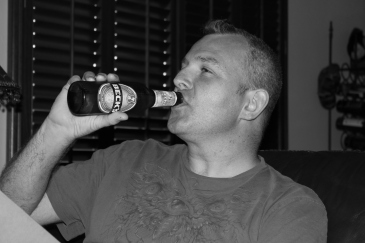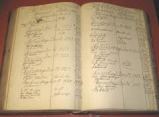An argument against feminist criticism in Mary Shelley’s Frankenstein
Frankenstein is a novel of parallels and although Professor Mellor makes a convincing argument that the novel is an allusion to the repression of female sexuality and the negation and usurpation of nature, it is the anthropomorphism of nature as female that weakens her argument. One could with equal authority claim that it was God in his heaven who was the creator of all and that nature is simply and extension of himself if one chose to sexualize creation. It’s true that throughout classical literature, nature has consistently been characterized as female; obvious given the parallels between the mysteries of child birth and the seasonal earth processes attributed to Mother Nature: it’s Mother Earth after all who is credited with the bounty of the harvest and the caprice of the seasons. One only has to consider the abduction of Persephone to understand the relationship between natural processes and the female. Given her authority in the field of feminine criticism and her declared position as a feminist it’s forgivable that she underwrites her own argument with cherry-picked inferences and lobbies the importance of what was almost certainly the emergence of a proto-feminist voice and the hypothesis that “Frankenstein” is representative of female equality and suffrage. By her own admission and the evidences of further reading, it was Mary’s mother –Wollstonecraft – who was the feminist and not she herself. Consequently, parallels between Shelly’s life and the novel are much easier to accept than imputations to gender rhetoric. Evidently there were larger social issues at hand – during the period that Frankenstein was written – than just the awakening of female equality.
The novel was written in 1816; the year after the defeat of Napoleon at Waterloo. For the entirety of Mary’s life England had been at war with France and consequently the subject of revolution and the divine right of kings would never have been far from public discourse. Rather than the emancipation of women as the burgeoning topic of the day it would have been the emancipation of the proletariat as evidenced by the Slave Trade acts of 1807 and the French Revolution of 1789. To give the professor credit she does touch on this at the end of the lecture, comparing Napoleon to Prometheus which I believe is the true nature of the novel. Personal inference of the author’s own life experience within the novel aside, the creation of the creature and the application of a Marxist theory reveal the clash of political ideology and the turmoil in which Europe found itself during and after the revolution. If one where to characterize the Revolution as “the creature” then the creation of both can be seen as world changing events. Frankenstein is a novel of public awakening and social realization; the creation of a “brave new world” by the common man contrary to the hegemony of the old world order. The creature personifies both the aspirations and fears of revolutionary change
From the very beginning Frankenstein is enamored with the ancient order and determined to follow the path of alchemy. It isn’t until he goes to the university to receive enlightenment that he’s confronted with a new way of thinking and comes to understand that there is an alternative approach to the scientific model. By utilizing both theoretical and practical methodology he quickly surpasses his peers and arrives at the idea of creating life itself. An aberration perhaps of the nature of man but an exciting prospect that something else is achievable; that the old ways don’t necessarily have to be adhered to following the axiom that age is no guarantee of wisdom. Coming from a wealthy, ranking family as he does, his perspective is bourgeois and therefore his creation is more of a challenge than it is a correction to accepted nature. Frankenstein symbolizes those ancient European hierarchies who – rather like the gods – toy with their subjects knowing that no matter the outcome of their social experiments and repressive politics they can always revert to the old customs; or, as in Shelley’s book, simply kill the creature. What is not understood by those institutions, portrayed by the character of Frankenstein, is that given the tools of life the creature, or the proletariat, comes to realize that “they” too are relative beings and, just as the feminists proclaim their own equality, so they proclaim the “Rights of Man.”
It’s interesting that just as we read in chapter one the view point of Frankenstein and the bourgeoisie we are allowed to hear the common voice of the “prols” via the creature in chapter two. Having been endowed with the spark of life – or societal recognition depending how one wishes to view Shelley’s analogy – the creature wishes nothing more than to emulate those who created him. Similarly the books read by the creature to educate himself describe both the fall of man – Milton – and failed empires –Plutarch – and that this literature is pertinent to recent historical events and isn’t coincidental. Milton’s “Paradise Lost” was famously used for rhetorical purposes to support and decry both states of being both pre and post revolution. Having been given life the creature wants nothing more to share in the most basic of human values. He doesn’t seek wealth or prestige, despite the fact that given his physical attributes he could probably achieve both, but instead craves the most basic of human traits, that of inclusion. Therefore, the creature doesn’t threaten the status quo but simply asks to be recognized by it.
In later chapters we see the entire Histrionic of the French Revolution from the Terror – the stalking of Frankenstein’s family – to the ultimate failure and the death of revolution – the killing of the second creature and ultimate suicide of the first – and the return to accepted normality. Just as the creature was a well-intentioned experiment that got out of hand, so too the Revolution came to personify the worst rather than the best in humanity. With direct allusion to social indifference and the inequality of 19th century society, Shelley has penned a political novel that – although shrouded in Gothic tropes – attempts to trace the rise and fall of revolutionary France and in doing so recognized the necessity for change whilst advising caution.














Great reading!
Many Thanks. There is always an alternative view 🙂